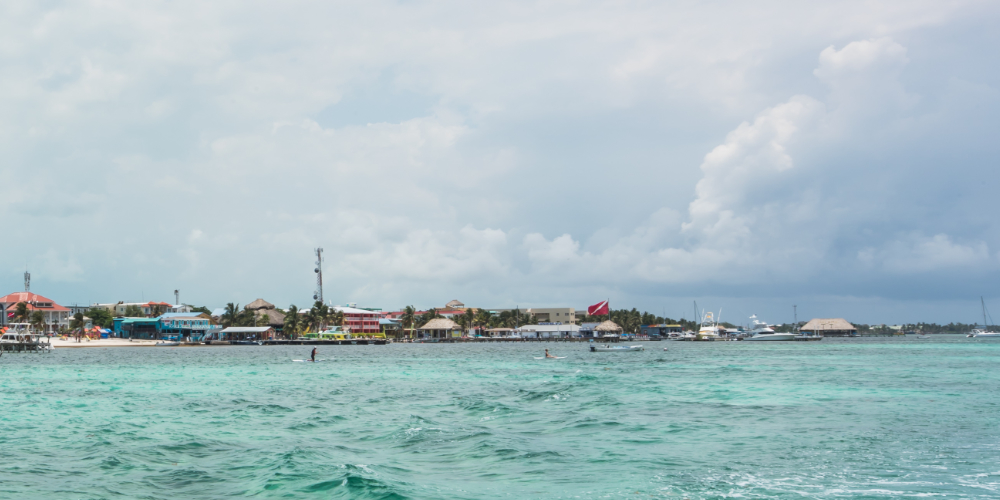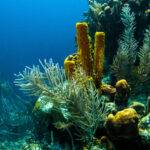When is the Best Time to Visit Belize?

Mar 14, 2025
One of the most important aspects of planning a trip is the timing. If you're planning on traveling to Belize, you'll want to consider a number of factors such as the weather, what you want to see and do, and your budget.
Visiting Belize can be enjoyable year-round but the dry season, from December to April, is generally considered to be the best time. It’s also the peak season for visitors, with minimal rainfall, abundant sunshine, temperatures averaging around the mid to upper 80s (29 to 32 Celsius), and the sea at a comfortable 80 degrees Fahrenheit (27 Celsius).
The dry season is ideal for taking part in all sorts of outdoor adventures and sightseeing although this is when you’re more likely to find bigger crowds and accommodation rates are usually higher too. To help you make the best decision for your Belize getaway, you’ll want to learn a little more about each season and the best time to travel for your particular interests.
December through April: Dry Season/High Season
As noted, the dry season coincides with the high season although the type of weather you can expect depends on the specific region you plan to visit. In the Cayes, it’s all about clear, sunny, and breezy days although there may be some rain in Placencia and the Toledo District with their more tropical climate. Temperatures are a bit cooler during these months particularly December and January with an average high of 82 degrees Fahrenheit (28 Celsius).
The dry/high season is ideal for swimming and snorkeling, hikes through the jungle, and taking in the sights like Maya temples. Carnival Week, just before Lent, brings the opportunity to enjoy lively festivities, particularly in San Pedro, the main town and hub on Ambergris Caye, where you can expect plenty of music and dancing.
As this is the year’s busiest period in terms of tourists, hotels and resorts will be priced at their highest due to the demand and you can expect airfare to be higher too. If you plan on visiting Belize between mid-December and mid-January or the weeks around Easter, be sure to book reservations well in advance as this is when the biggest waves of tourists arrive. The sooner you book, the more likely you are to find better prices too.
May, June, July and November: Shoulder Season
May through July, and November are considered shoulder season months. There might be some rain in May with it a transitional month leading to the wet season while November is when it starts to decrease again, bringing more sun before the dry season officially starts. Keep in mind that it stays relatively dry on Ambergris Caye during the summer. Any of these months can be great for travel to Belize, with less competition for space on the beach and hotel rooms, making it possible to score better deals on accommodation.
May in the Cayes is predominantly dry with the heat and humidity gradually increasing. This month is also when you can enjoy the Chocolate Festival, held in Punta Gorda in the Toledo District every year. It combines cacao, cuisine, music, history, and culture for a mouthwatering, unforgettable experience. If you visit in June, consider attending the Mango Fest in Hopkins, a celebration of the succulent fruit featuring delicious dishes using locally-grown mangos, live music, games, children’s stories, and activities, including a fishing contest.
In November, the humidity and heaviest rains decrease once again. Plus, November 19 is Garifuna Settlement Day providing another reason to visit Belize this month. It’s the best time to learn more about the Garifuna people while enjoying traditional dancing and drumming.
August through October: Rainy Season/Low Season
Generally, the summer months are the rainy/low season although it stretches through early fall. June marks the start of the rainy season on the mainland but on Ambergris Caye it will be relatively dry between June and August, making it a good time to visit the island and potentially enjoy reduced prices for airfare. Even on the mainland, you’ll rarely experience the persistent rain that arrives later in the season with heavier showers primarily falling in the afternoon and overnight. Temperatures are warm during this time with the average high ranging from 88 to 90 degrees Fahrenheit (roughly 31-32 Celsius).
June and July are generally lower risk for hurricanes and tropical storms with the odds increasing in August. The highest risk comes in September and October, so if you plan to visit then, keep a close eye on the forecast. Purchasing travel insurance is a must for any visit to Belize, but it’s critical for travel during these months. That said, if you’re here for Independence Day, celebrated on September 21, you can experience especially vibrant Belizean culture with traditional performances, music and dance, parades, fireworks, and more.
Best Time to Visit Belize for Diving and Snorkeling
Belize is one of the world’s best places for diving and snorkeling, attracting visitors from across the globe. The Great Blue Hole is an especially famous site and if you want to experience its incredible stalactites, stalagmites, and abundant marine life, visibility will be at its peak from April through June. Plus, a visit in May or June brings the chance for better deals on accommodation and the crowds are thinner too. These months are also optimal for diving with whale sharks at Gladden Spit near Placencia. For more help in determining when to visit, check out the official PADI blog.
Best Time to Visit Belize for Fishing
Belize also draws many for its world-class fishing, particularly for tarpon, bonefish, and permit. If you want to catch all three, the best time to visit Belize is from May through August, or the “grand slam fishing season.” Ambergris Caye offers fishing year-round, with January good for bonefish and tarpon, and in February, snook, grouper, and wahoo are common catches. In June, mahi mahi arrive, with August the best month for tarpon.
Best Time to Visit Belize for Lobster
If you’d like to enjoy fresh Caribbean lobster, you’ll want to visit during the lobster season. While the exact dates can vary from year to year, it’s generally between June and February, with the fishermen setting up their lobster traps and delivering their catches to local restaurants. If you visit Belize just after the season begins, typically throughout much of July, you can also enjoy Lobster Fest, held in Ambergris Caye, Caye Caulker, and Placencia.
Best Time to Visit Belize for Jungle Wildlife
Many visit Belize for the jungle wildlife, with everything from scarlet macaws and toucans to iguanas, monkeys, and coatimundi that can be spotted all year round. The Red Bank Scarlet Macaw tour will bring you to one of the country’s largest concentrations of the birds. They migrate to the area to feed every year from December through March and during the peak of the season, you can see as many as 150 at one feeding ground. Plus, while you’re here, other exotic birds can often be seen too.
With the wet season bringing an abundance of food, especially in June and July, the wildlife tends to be more active, which means it’s more easily spotted. No matter when you visit, it’s best to head out early in the morning, before sunrise, and again after dark, bringing the chance to see nocturnal creatures like the coatimundis, agoutis, kinkajous, and owls. Jaguars can be found in Cockscomb, the only jaguar reserve that was established to protect the endangered animals along with other native Belizean species. They’re most active at dawn and dusk.
Of course, no matter when you’re here, you can see the country’s jungle wildlife at the Belize Zoo. Known as the “best little zoo” in the world, viewings are virtually guaranteed. You can even get up close and personal by booking a meet and greet with the animal ambassadors.
As you can see, there’s really no one best time to visit Belize as it really depends on your personal preferences. This Central American country is an amazing destination any time of the year but by taking our guide into consideration before choosing the dates for your trip, you’re practically guaranteed an unforgettable escape!





